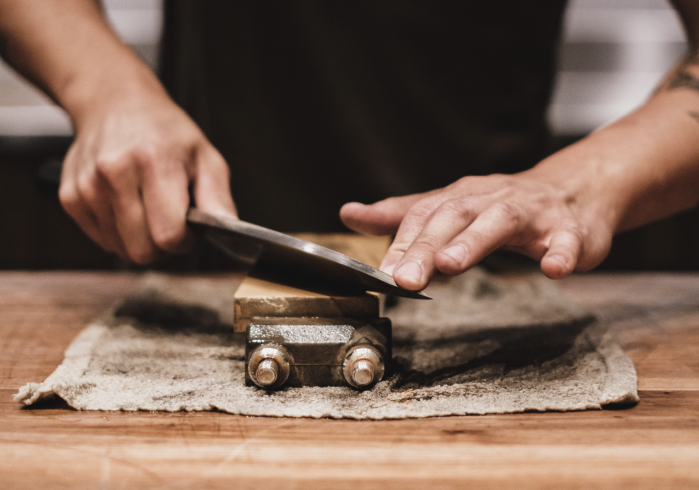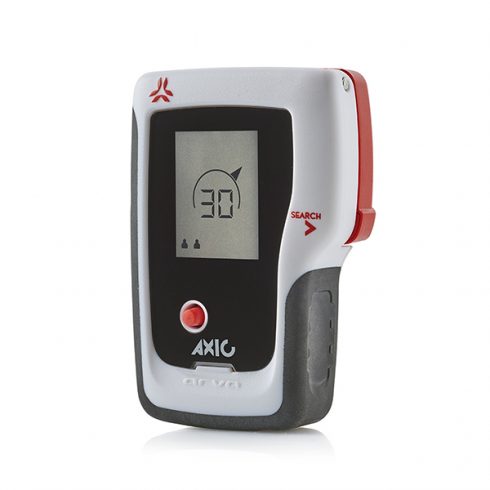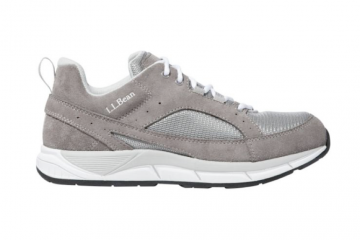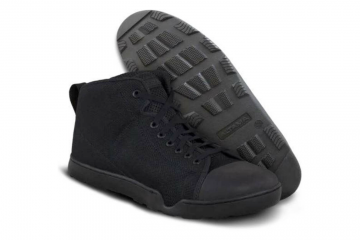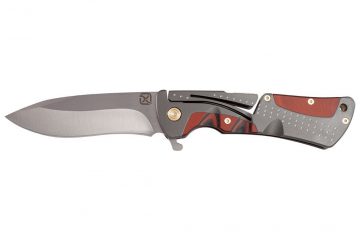In this article, we’ll explain how to successfully sharpen your knife and which tools you can use to get your Damascus knife blade back to its full potential.
Contents
What is Damascus Steel?
Thanks to its beautifully patterned blade, a knife made of Damascus steel is very easily recognizable. This wavy, somewhat mottled pattern develops from the two very specific techniques that are used to make these blades:
Either the steel is forge-welded together and then twisted and manipulated, or the steel is flattened and then folded in order to create those iconic layers as seen on the metal. Usually, high-carbon specialty steel will be used for the inner core of the blade and then surrounded by stainless steel.
The folding and twisting of the metal do not only have optical benefits for the blade. Manipulating the steel in such a way will even out any impurities found in the metal and thus making these blades some of the strongest available on the market.
Their extremely sharp edge and lightweight handling are also what make Damascus knives some of the most popular kitchen knives.
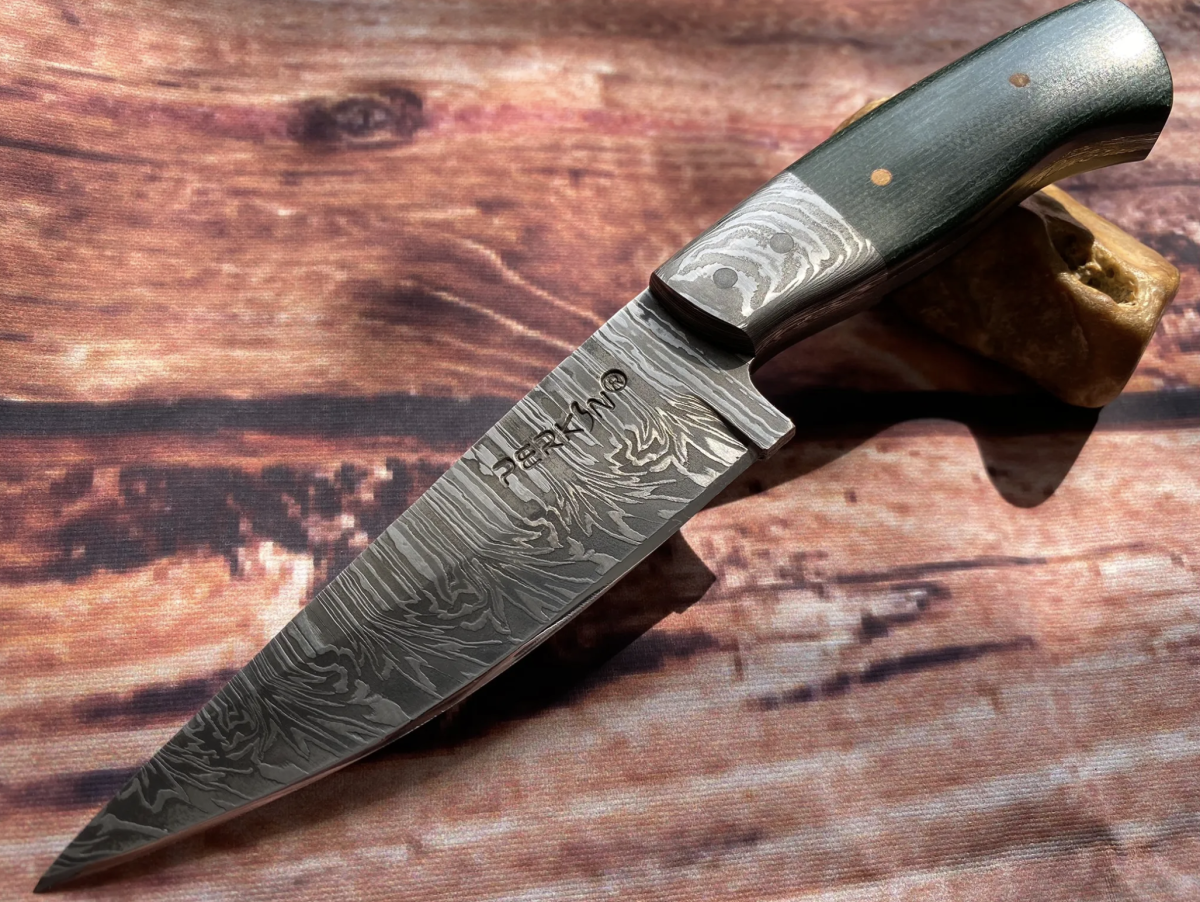
Damascus Knife Sharpening Steps
Now that you know how Damascus knives are being made let’s walk you through what you need and the various steps of the sharpening process in order to make sure your blade edge stays razor sharp.
There are actually several ways and tools you can use for freehand sharpening. Anyone who values having good kitchen knives should probably get their hands on a knife sharpener sometime in their lives. Below we will walk you through the most commonly used tools to fight dull knives:
Sharpening stones
There are various sharpening stones available on the market, but for best results, we would recommend sticking to the well-known whetstone, but diamond stones also work really well. Here are the steps to follow in order to turn your blunt knife into a sharp knife again:
- Pick an angle
Usually, the knife edge should be held at an angle of 13 to 30 degrees per side. A shallower angle will provide you with a sharper edge, while a steeper angle makes the edge more durable. For a good compromise, we suggest holding your knife at a 15 to 20-degree angle.Make sure that you hold your angle consistent so that your knife does not get an uneven edge. - Lubricate your stone with mineral oil
Either use honing oil or light mineral oil to lubricate the stone. This way, the blade will pass over the stone more smoothly. Check with your stone’s manufacturer first, as some stones’ sharpening properties will actually diminish when you oil stones. Otherwise, it might be a good call to water stones before using them to sharpen a knife. - Use angle or sharpening guide
If you have an angle or sharpening guide, it will make it a lot easier to control your knife and keep a consistent angle. This is ultimately one of the hardest parts of sharpening a knife, as keeping the angle consistent requires quite a bit of skill if you do not have a tool to be placed underneath your knife.For those that do not possess an angle guide, a useful trick is to paint the tip of your blade with a Sharpie pen or marker. Then, while moving the knife over the sharpening stone, you can check whether the marker is being removed evenly during the process. - Use the rough grit first
Generally, any sharpening stone comes with a more rough grit and a finer grit on each side. Use the rough grit to grind down the steel on either side; this way, you sharpen or hone the knife. Make sure you only apply very light pressure to not damage the knife or grind off too much of the steel, as this will weaken the edge. - Sharpen the knife
As you drag the knife across the sharpening stone, make sure you drag it in the opposite direction you would move it when you would be cutting with it. If you would move in the cutting direction, you risk damaging the stone or burrowing it too much.Continue at the chosen angle until the grind goes about halfway through the steel. Then flip the knife to sharpen the other side of the edge in the same way and at the same angle.The best way to determine whether you have sharpened your knife enough is to check whether your blade edge has created a burr. As these are usually too hard to see, you will be able to check whether there is a burr by stroking your thumb away from the edge. The burr will scrape or catch on your thumb. - Use the soft grit
If you feel that you have sufficiently sharpened your knife enough, use the finer grits to even out any burrs and create a finer edge. Again, make sure you treat both sides of the knives with the softer grit equally to create an even edge. - Alter swipes on soft grit
Begin to switch the sides of your knife after every swipe, sharpening the knife with a single stroke instead of several to provide the blade’s edge with an almost polished finish.Note that if you strop your blade over the soft grit to further polish your edge, you will lose the bite your blade needs to cut through things such as tomato skins.
Honing rod
Honing steel is another common practice of knife sharpening in between cuts. Note that it will keep your blade from degrading but is not as effective as a sharpening stone.
If you wish to keep your knives sharp in between uses, here is how to do it using a honing rod:
- Hold the honing rod in your non-dominant hand, facing away from your body, with the rod tip slightly elevated in comparison to the rod handle.
- Hold the knife in your dominant hand, and place it angled at approximately 20 degrees to the honing rod. This angle should be maintained during the honing process at all times.
- Start the sharpening motion with the heel of the knife touching the honing rod and pull/ sweep the blade across the rod in the exact opposite motion you would use to cut with it.
- To sharpen the other side’s edge, place the knife below the honing rod and continue at the same angle and with the same movement.
- Finish off by changing from top to bottom of the rod in between motions for a total of eight “revolutions”.
FAQs
Here is some further information on sharp knives and on sharpening steel in general.
What are the benefits of a Damascus knife?
Whether you wish to purchase a Damascus knife to enrich your pocket knife collection or to have a really high-quality kitchen knife at home, you can be sure to possess a very sharp knife that will probably last you for a lifetime.
Damascus knives aren’t just really pretty to look at; they also have a very sharp edge that is known to cut through even the most difficult items, such as tomato skins, with ease. On top of that, they will keep a sharp cutting edge for much longer than knives made of softer steel.
Are electric knife sharpeners any good?
An electric knife sharpener can be a good option to sharpen a knife quickly and to get the exact desired sharpness of your knife’s edge. But you should always make sure to buy the best quality when it comes to these devices, as a low-quality electric sharpener can easily take off too much of the blade or damage the entire blade.
A professional chef will likely only ever manually sharpen a knife, as they have perfected their own sharpening techniques over the years.
What is the coffee mug trick?
If you happen to have a dull blade but do not have any sharpening equipment around and don’t want to spend a lot of money giving your knives away for sharpening, an old coffee mug can serve as a handy tool.
Place it upside down so that the bottom of the mug is exposed. The ceramic edge of the mug will provide a good enough coarse grit to sharpen your blade.
Use the same motions you would use with a sharpening stone, and make sure you keep the correct angle when sharpening your knife – which also would be about 20 degrees.
Final Thoughts
Even the best knives eventually go blunt; therefore, knowing the various techniques that can be used to sharpen a knife is very handy.
The most important part of sharpening knives is to know the proper angle for the technique you are going for. If you stick to that, you can turn even the dullest edge back into a true chef’s knife.
Photo Credit:
https:// perkinknives.com/
